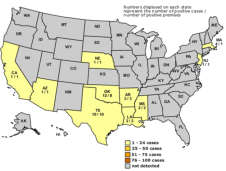We think horses are very interesting and amazing
animals. Here are a few fun facts about the amazing
animal we call the horse. Take a look!
PO Box 50
Bluff Dale TX
USA 76433
Phone: 254.728.3082
Cameron Horsemanship All Rights Reserved 2016
Horse Facts
HORSE SAYINGS AND WHERE THEY CAME FROM
“Don’t look a gift horse in the mouth” • This saying has been in existence for centuries, even appearing in a 1546 compendium of English proverbs. Its origin lies in the fact that a horse’s teeth can be used to tell its age. To receive a horse as a gift and then immediately inspect its teeth to determine its value was considered rude. In modern times, you’d never receive a gift and then ask the giver how much he/she paid for it, right? “Get off your high horse” • In medieval times, people of noble birth rode the best horses, which were generally bigger, stronger and taller. To ride a high horse was to be in a higher position, both physically and economically, and the rider could feel superior to those less privileged. We now use the phrase to refer to any instance in which someone affects an air of moral superiority. “Pee like a racehorse” • The fact is horses urinate a lot. The average adult male horse can urinate up to to gallons per day, and the bigger the horse, the more they go. In the 1970s, horse trainers began using diuretic drugs on their horses before races, believing that an empty bladder would make the horse lighter on its feet and, in turn, faster. Our popular notion of “peeing like a racehorse” refers to these horses’ evacuating their bladders in massive quantities before they compete. “Straight from the horses mouth” • Race tracks and betting parlors are full of hot tips about which horse is most likely to win; tips that come from trainers, owners, jockeys — those closest to the horse itself - are considered the most credible. First hand tips from this inner circle are the next-best thing to hearing them from the horse itself. “Charley Horse” • A common name for a cramp in the leg, there is no definite story about the origin of the term “Charley Horse.” The most common believe is that it got its origins in baseball no earlier than 1886. A popular story is that Chicago baseball player Joe Quest suffered from stiff legs and it reminded him of an old lame horse named Charley.
HORSES AND WATER
• The average horse will drink between 5 and 15 gallons of water a day. • A horse can live almost a month without food, but he can only survive about 3-6 days without water. • Field-kept horses obtain moisture from pasture. In fact, fresh pasture is approximately 60–80% moisture, meaning they obtain a substantial amount of water while grazing. In contrast, grains, concentrates, and baled hay contain far less moisture, which means horses need to drink more to meet their water needs. Another factor to consider in a herd situation is pecking order. If you suspect that one or more horses are being chased away from the water trough, consider adding a second trough.
HORSES AND SLEEP
• Horses must lie down to reach REM sleep. They only have to lie down for an hour or two every few days to meet their minimum REM sleep requirements. Horses sleep better when in groups because some animals will sleep while others stand guard to watch for predators. • Horses are able to sleep both standing up and lying down. They are able to doze and enter light sleep while standing. Horses are able o sleep standing up because a “stay aparatus” in their legs allows them to relax their muscles and doze without collapsing. • Unlike humans, horses do not need a solid, unbroken period of sleep time. While horses may spend up to 15 hours in standing rest and several hours lying down, they only require approximately two and a half hours of sleep, on average, in a 24-hour period. Most of this sleep occurs in many short intervals of about 15 minutes each.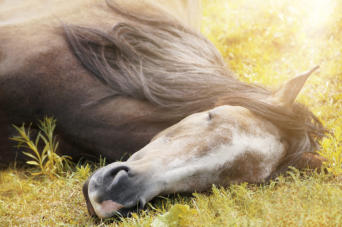
HORSE TEETH
• Geldings and Stallions have 44 permanent teeth. Mares have 36 to 40 permanent teeth. • A horse's teeth take up a larger amount of space in their head than their brain • Horses have teeth that continue to erupt for 20 to 30 years. These teeth are called a “hypsodont.” • His front teeth, called incisors, are designed to shear off grass and other forage. Your horse has six upper and six lower incisors. • His back teeth, called molars, are designed to grind food into a digestible form. Your horse has 12 upper and 12 lower molars. • Most geldings and stallions, and some mares, have two small upper wolf teeth, remnants of molars that no longer serve a useful function. These small teeth sit just in front of the molars on the upper haw. Rarely will wolf teeth be present in the lower jaw. • Because your horse uses his molars to grind food, these teeth continue to erupt from his gums throughout his lifetime. This helps to ensure that he has plenty of grinding ability as he matures. However, because of this continuous growth, minor misalignments are likely to become more and more pronounced with time, which is why a properly balanced mouth is so important for maintaining good health in a horse's older years. • Tooth Eruption Forty thousand chews per day cause substantial tooth abrasion. Teeth erupt (move out of the bone) about 1⁄8 inch per year throughout a horse's lifetime to compensate for normal attrition (wear). (See page 58 for a diagram illustrating tooth eruption.) According to Daugherty, geriatrics begin to lose some of their teeth in their late 20s if the teeth become overly worn. • Horses produce approximately 10 gallons of saliva a day.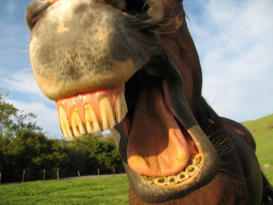
HORSE EYES
• He can see almost 360 degrees around himself because his eyes are on the sides of his head. That's why he notices objects or movements behind him that you (with eyes on the front of your head) can't even see without turning around. But his "rear view" vision is less distinct than his vision from about his shoulder forward--so he naturally wants to skitter away from unfamiliar things behind him or turn to see them better. • He sees most things with one eye--monocular vision--instead of with both eyes simultaneously (binocular vision --the way you see the world--which he uses for just a small area in front of his head). That's why he may spook at something that he's already walked past and reacted to once: He's seeing it for the first time--with his other eye. (How to know whether he's looking with one eye or two? As he tries to focus with both eyes on something, he pricks both ears straight ahead.) • His extravagantly big eyeball (largest of any land mammal's) magnifies everything fifty percent larger than we perceive it. That enables him to see distant objects in clearer detail than we can (an advantage for a prey animal needing to spot predators far away). • He has two ways to bring objects into focus--by using tiny muscles to change the shape of his eye's lens (which is the only way you can focus)--or by changing his head position to direct the image to a different part of his eye. He raises his head to focus on far-away objects (and may turn it slightly at the same time to bring one eye to bear) and lowers it to see closer objects. That's why you see his head going up and down as he tries to figure out some new object he's spotted. It's also why he raises his head on the approach to a fence, then lowers it as he gets closer and gathers himself to spring. If you restrict these natural head movements, he may shake his head, shy because he can't see the object clearly, or even stop because he can't see well enough to jump. • He sees much better at night than you--even better than your cat! In the dusk, though, you see better than he does, because... • ...he sees some colors (yellow, green, blue; red is iffy)--but this color vision diminishes with decreasing light. That's why he may tend to bump into you, the gate, or his pasture mates if you're brining in your horses around twilight: His color perception has dimmed, but his night vision hasn't quite kicked in yet. • The third eyelid is a lightning-fast flap that zips across from the inner corner to seal the eye shut against threat even before the lids can close. It's also the source of lubricating tears.
HORSE MOVEMENT
• The fastest recorded sprinting speed of a horse was 55 mph. Most gallop at around 27 mph. • In 1872, Leland Stanford (1824-1893) made a bet that at some point in the gallop all four of a horse’s legs are off the ground at the same time. Eadweard Muybridge (1830-1904) proved him right by using a series of 24 cameras and photographing a racehorse named Sallie Gardner.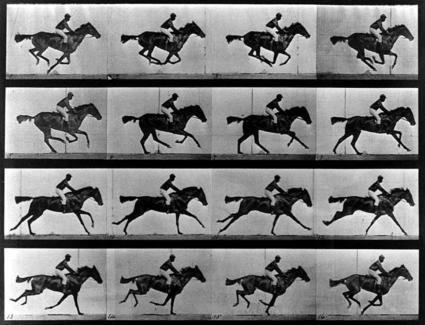
HORSES AND HEALTH
• Coggins Test: We all know it’s necessary to have a current Coggins for each horse traveling to an event or a sale…But what is a Coggins? The Coggins test, named for Leroy Coggins, DVM, tests for the viral disease Equine Infectious Anemia, also known colloquially as “Swamp Fever.” While the majority of northern states have eradicated the disease, which is commonly spread by fly or mosquito bite, infected horses traveling from the south can reintroduce it. Requirements for testing vary from state to state; some states allow one year between Coggins, and some only six months.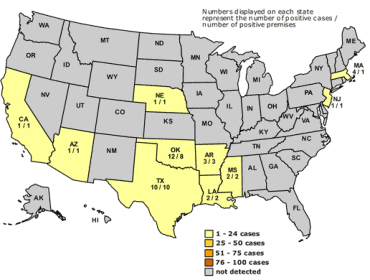
We think horses are very
interesting and amazing
animals. Here are a few fun
facts about the amazing
animal we call the horse.
Take a look!
PO Box 50
Bluff Dale TX
USA 76433
Phone: 254.728.3082
Cameron Horsemanship All Rights Reserved 2016
Horse Facts
HORSE SAYINGS AND WHERE THEY CAME FROM
“Don’t look a gift horse in the mouth” • This saying has been in existence for centuries, even appearing in a 1546 compendium of English proverbs. Its origin lies in the fact that a horse’s teeth can be used to tell its age. To receive a horse as a gift and then immediately inspect its teeth to determine its value was considered rude. In modern times, you’d never receive a gift and then ask the giver how much he/she paid for it, right? “Get off your high horse” • In medieval times, people of noble birth rode the best horses, which were generally bigger, stronger and taller. To ride a high horse was to be in a higher position, both physically and economically, and the rider could feel superior to those less privileged. We now use the phrase to refer to any instance in which someone affects an air of moral superiority. “Pee like a racehorse” • The fact is horses urinate a lot. The average adult male horse can urinate up to to gallons per day, and the bigger the horse, the more they go. In the 1970s, horse trainers began using diuretic drugs on their horses before races, believing that an empty bladder would make the horse lighter on its feet and, in turn, faster. Our popular notion of “peeing like a racehorse” refers to these horses’ evacuating their bladders in massive quantities before they compete. “Straight from the horses mouth” • Race tracks and betting parlors are full of hot tips about which horse is most likely to win; tips that come from trainers, owners, jockeys — those closest to the horse itself - are considered the most credible. First hand tips from this inner circle are the next- best thing to hearing them from the horse itself. “Charley Horse” • A common name for a cramp in the leg, there is no definite story about the origin of the term “Charley Horse.” The most common believe is that it got its origins in baseball no earlier than 1886. A popular story is that Chicago baseball player Joe Quest suffered from stiff legs and it reminded him of an old lame horse named Charley.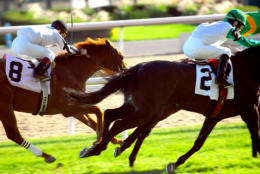
HORSES AND WATER
• The average horse will drink between 5 and 15 gallons of water a day. • A horse can live almost a month without food, but he can only survive about 3-6 days without water. • Field-kept horses obtain moisture from pasture. In fact, fresh pasture is approximately 60–80% moisture, meaning they obtain a substantial amount of water while grazing. In contrast, grains, concentrates, and baled hay contain far less moisture, which means horses need to drink more to meet their water needs. Another factor to consider in a herd situation is pecking order. If you suspect that one or more horses are being chased away from the water trough, consider adding a second trough.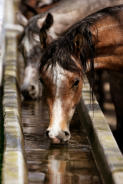
HORSES AND SLEEP
• Horses must lie down to reach REM sleep. They only have to lie down for an hour or two every few days to meet their minimum REM sleep requirements. Horses sleep better when in groups because some animals will sleep while others stand guard to watch for predators. • Horses are able to sleep both standing up and lying down. They are able to doze and enter light sleep while standing. Horses are able o sleep standing up because a “stay aparatus” in their legs allows them to relax their muscles and doze without collapsing. • Unlike humans, horses do not need a solid, unbroken period of sleep time. While horses may spend up to 15 hours in standing rest and several hours lying down, they only require approximately two and a half hours of sleep, on average, in a 24-hour period. Most of this sleep occurs in many short intervals of about 15 minutes each.
HORSE TEETH
• Geldings and Stallions have 44 permanent teeth. Mares have 36 to 40 permanent teeth. • A horse's teeth take up a larger amount of space in their head than their brain • Horses have teeth that continue to erupt for 20 to 30 years. These teeth are called a “hypsodont.” • His front teeth, called incisors, are designed to shear off grass and other forage. Your horse has six upper and six lower incisors. • His back teeth, called molars, are designed to grind food into a digestible form. Your horse has 12 upper and 12 lower molars. • Most geldings and stallions, and some mares, have two small upper wolf teeth, remnants of molars that no longer serve a useful function. These small teeth sit just in front of the molars on the upper haw. Rarely will wolf teeth be present in the lower jaw. • Because your horse uses his molars to grind food, these teeth continue to erupt from his gums throughout his lifetime. This helps to ensure that he has plenty of grinding ability as he matures. However, because of this continuous growth, minor misalignments are likely to become more and more pronounced with time, which is why a properly balanced mouth is so important for maintaining good health in a horse's older years. • Tooth Eruption Forty thousand chews per day cause substantial tooth abrasion. Teeth erupt (move out of the bone) about 1⁄8 inch per year throughout a horse's lifetime to compensate for normal attrition (wear). (See page 58 for a diagram illustrating tooth eruption.) According to Daugherty, geriatrics begin to lose some of their teeth in their late 20s if the teeth become overly worn. • Horses produce approximately 10 gallons of saliva a day.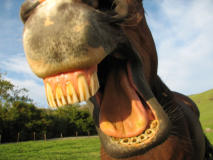
HORSE EYES
• He can see almost 360 degrees around himself because his eyes are on the sides of his head. That's why he notices objects or movements behind him that you (with eyes on the front of your head) can't even see without turning around. But his "rear view" vision is less distinct than his vision from about his shoulder forward--so he naturally wants to skitter away from unfamiliar things behind him or turn to see them better. • He sees most things with one eye--monocular vision--instead of with both eyes simultaneously (binocular vision --the way you see the world--which he uses for just a small area in front of his head). That's why he may spook at something that he's already walked past and reacted to once: He's seeing it for the first time--with his other eye. (How to know whether he's looking with one eye or two? As he tries to focus with both eyes on something, he pricks both ears straight ahead.) • His extravagantly big eyeball (largest of any land mammal's) magnifies everything fifty percent larger than we perceive it. That enables him to see distant objects in clearer detail than we can (an advantage for a prey animal needing to spot predators far away). • He has two ways to bring objects into focus--by using tiny muscles to change the shape of his eye's lens (which is the only way you can focus)--or by changing his head position to direct the image to a different part of his eye. He raises his head to focus on far-away objects (and may turn it slightly at the same time to bring one eye to bear) and lowers it to see closer objects. That's why you see his head going up and down as he tries to figure out some new object he's spotted. It's also why he raises his head on the approach to a fence, then lowers it as he gets closer and gathers himself to spring. If you restrict these natural head movements, he may shake his head, shy because he can't see the object clearly, or even stop because he can't see well enough to jump. • He sees much better at night than you--even better than your cat! In the dusk, though, you see better than he does, because... • ...he sees some colors (yellow, green, blue; red is iffy)--but this color vision diminishes with decreasing light. That's why he may tend to bump into you, the gate, or his pasture mates if you're brining in your horses around twilight: His color perception has dimmed, but his night vision hasn't quite kicked in yet. • The third eyelid is a lightning-fast flap that zips across from the inner corner to seal the eye shut against threat even before the lids can close. It's also the source of lubricating tears.
HORSE MOVEMENT
• The fastest recorded sprinting speed of a horse was 55 mph. Most gallop at around 27 mph. • In 1872, Leland Stanford (1824-1893) made a bet that at some point in the gallop all four of a horse’s legs are off the ground at the same time. Eadweard Muybridge (1830-1904) proved him right by using a series of 24 cameras and photographing a racehorse named Sallie Gardner.


- About Craig
- About Cole
- Ride Smart TV
- Apprenticeship Program
- Ride Smart Certification
- Events
- Bluff Dale Clinics
- Ride Smart Schedule
- Ride Smart Club
- Double Horn Ranch Gallery
- Bluff Dale Clinics Gallery
- Ride Smart Gallery
- Western Horseman Weekend
- Equidays Gallery
- October Clinic Gallery
- Shop
- Horses For Sale
- Training Horses
- Horse Facts
- Connect
- Partners
HORSES AND HEALTH
• Coggins Test: We all know it’s necessary to have a current Coggins for each horse traveling to an event or a sale…But what is a Coggins? The Coggins test, named for Leroy Coggins, DVM, tests for the viral disease Equine Infectious Anemia, also known colloquially as “Swamp Fever.” While the majority of northern states have eradicated the disease, which is commonly spread by fly or mosquito bite, infected horses traveling from the south can reintroduce it. Requirements for testing vary from state to state; some states allow one year between Coggins, and some only six months.